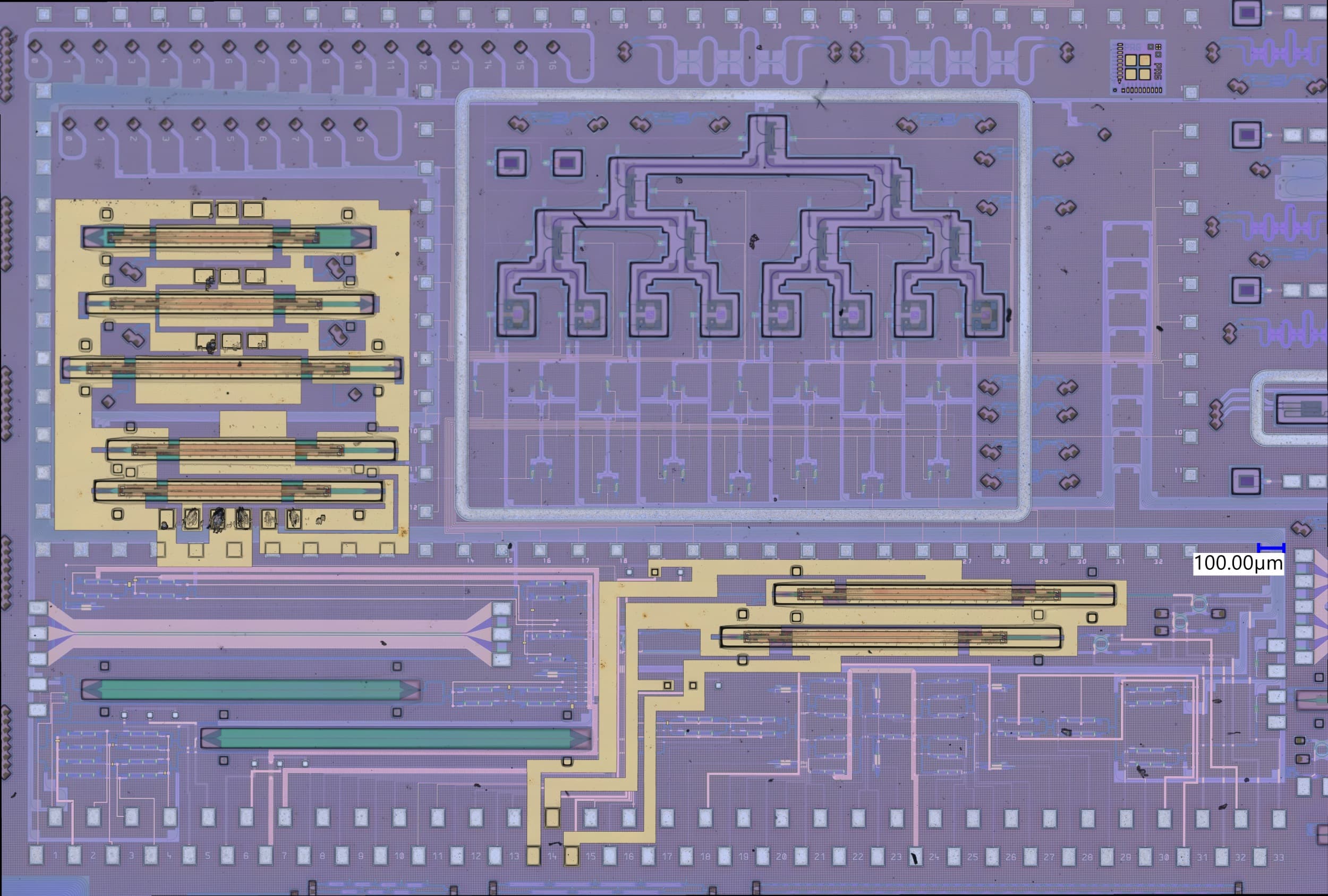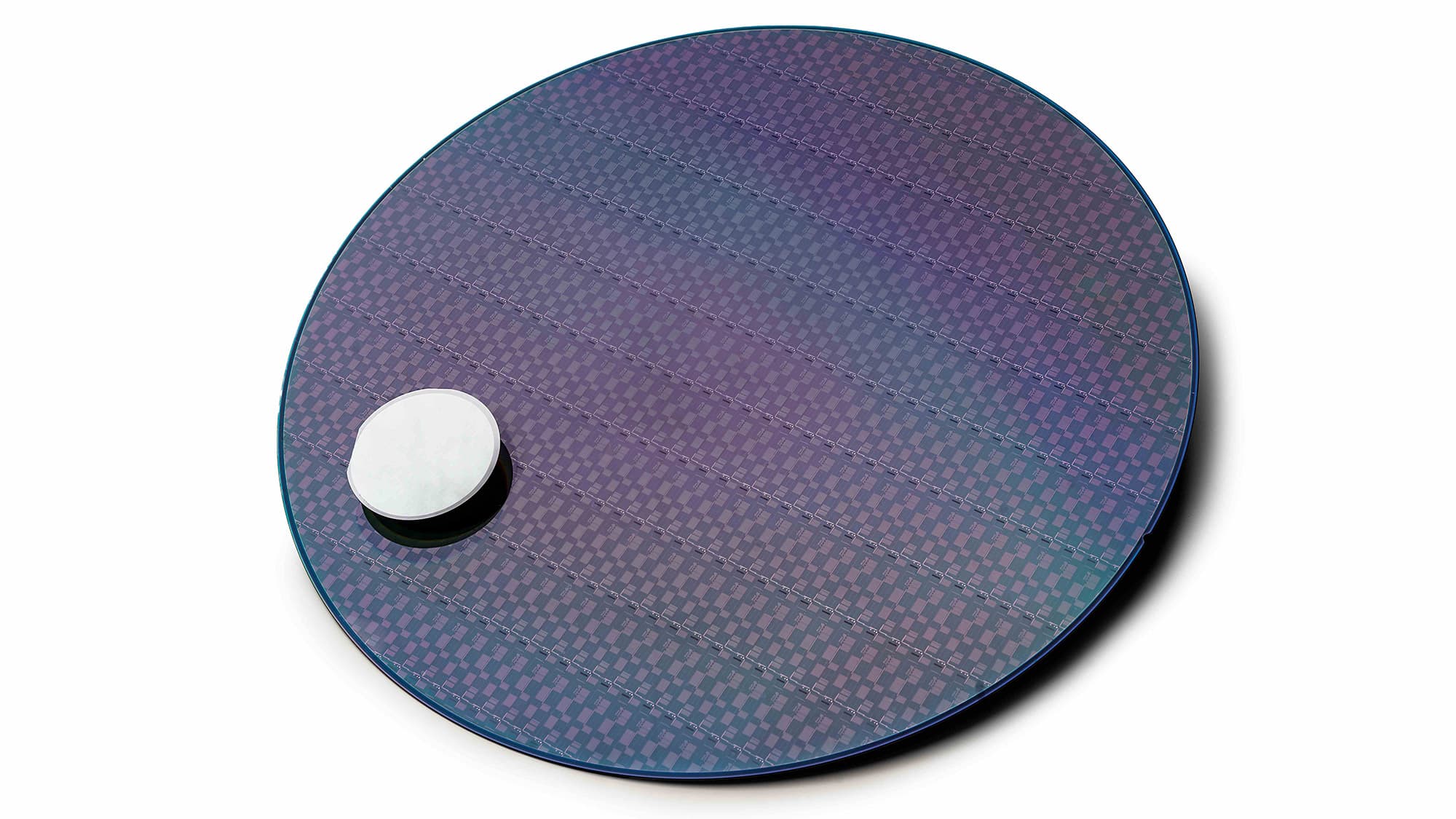The team led by imec’s Ingrid Moerman designed a system that excels in quality of service and the ability to cope with unexpected scenarios. Moerman leads the wireless research at IDLab, an imec research group at Ghent University. According to her, systems like these are the future for highly reliable wireless connections, for example in Industry 4.0 environments. The team is now upgrading its radio for SC2’s final and most challenging stage.
Coffee shops run rusty communication
Picture a familiar situation, a coffee shop where you try to browse the Internet and get some work done, only to get frustrated by the slow Wi-Fi.
Upgrading to the newest type of Wi-Fi router that touts extreme throughputs doesn’t bring much relief. It is the way the radio spectrum is organized that is to blame. Today, about half of the world’s Internet traffic is relayed over two small frequency bands. With the explosion of data traffic, these get forever more choked.
In fact, nothing much has changed since Marconi sent the first wireless signal across the oceans back in 1901. A wireless link between two appliances still relies on the fact that the two parties have agreed beforehand over which frequency they will communicate.
Following, the frequency spectrum has been divided into rigidly and exclusively licensed bands, each reserved for one type of communication. Only a few narrow unlicensed bands can be used freely, and these have been occupied by Wi-Fi for wireless internet, Bluetooth communication, or IoT traffic. In these unlicensed bands, traffic has exploded. In most licensed bands, in contrast, the spectrum is either underutilized or hardly used. Think of bands that are reserved for emergency communication or for sporadic bursts from satellites.
To develop new spectrum sharing strategies and overcome this steadily worsening situation, the USA Defense Advanced Research Projects Agency (DARPA) set up SC2, a competition consisting of three stages, with progressively harder goals.
Bringing on innovation through gaming
Ingrid Moerman: “The idea is that the teams enter the competition with an innovative system for wireless communication that is able to share spectrum with competing radios by scanning the spectrum for free spectrum holes. The main goal is to support more traffic with a quality of service that is much better than would be possible with fixed spectrum allocation. This of course without interfering with the radios that have the licensed rights to operate in those bands.”
“In the competition, the organizers play out a number of scenarios where the various radios have to collaborate to run applications to the best of their abilities. One of the scenarios, for example, is set at a shopping mall with a coffee shop, a restaurant, and a number of other companies. Each of those has separate communication nodes that are accessed by varying numbers of customers and data loads throughout the day. For each scenario, a great number of games is played. And each game involves a number of access points and a selection of team radios that should collaborate to achieve the best outcome.”
“In the first stage, ten winning teams were selected; our team was ranked fifth and awarded 750.000 dollars.”
“The second stage of the competition, however, was much harder. In each game, more teams were pitted against each other and the playing field contained more communication nodes. During the year we had been given some scenarios to test our application, but in the final rounds some of the gaming situations were new. And that gave us an edge. Unlike the systems of some of our competitors, ours isn’t optimized or trained for particular scenarios. It is flexible, with a more generic approach that adapts to new situations. One of the most challenging situations, for example, required setting up a flawless communication in an environment with unpredictable frequency jammers. Our radio could perfectly cope and proved one of the best of the competition. So we also passed this stage with flying colors and were awarded a second 750.000 dollars.”
DARPA has a history of bringing on innovation through challenges like these. The original Internet, for example, was called DarpaNet. It contained the core concepts of what was needed to spawn today’s connected world. Another great example of a technology that was instigated by a DARPA challenge is autonomous driving, a challenge that was won 10 years ago by some of the people who would go on to develop the Google car. By setting a visionary challenge and having a multitude of teams competing and looking for solutions, DARPA tries to set in motion a wave of change. And by having teams look for solutions that work for a wide variety of use cases and applications, they make sure that the technology will be future-proof and widely applicable.
For SC2 – the Spectrum Collaboration Challenge – the explicit goal was to develop breakthrough capabilities by taking advantage of the most recent advances in artificial intelligence and machine learning. It challenged innovators in academia and business to produce breakthroughs in collaborative AI, and to use these to catalyze a new spectrum paradigm that may be the seed of a new wireless era in which there are no spectrum restrictions.
A match for Industry 4.0
Ingrid Moerman: “Our radio makes use of deep learning and distributed intelligence. It is flexible on all levels and doesn’t require a fixed infrastructure like today’s cellular technologies do. Central to our approach was to ensure a stable, guaranteed quality of service.”
“Many companies still promote their wireless products by pointing to high throughputs. But what is the worth of maximum throughput in a modern application if you cannot even guarantee a much lower but stable throughput all of the time?”
“Because that is what highly connected applications today sorely need: guarantees on latencies, sustained throughputs and reliability. That’s what they need e.g. to manage and steer modern manufacturing processes, or next-generation traffic infrastructure, to name but two. Today many state-of-the-art manufacturing environments still rely on dense cabling for communication and process management. But the complexity, cost, and maintenance of thousands of cables are fast becoming prohibitive. Wires are often seen as the best guarantee for reliable communication. But when a cable breaks or faulty wiring is installed, the consequences can be grave and take a long time to repair. No so with wireless systems.”
“Admittedly, until recently wireless was not ready for Industry 4.0. But systems like ours are. Because we’ve concentrated on latencies and quality of service. And because our system is able to adapt and operate under the harshest conditions, taking in reconfigurations, competing wireless sources and even working around noise, interference and even electronic jammers.”
Now for the last stage
Ingrid Moerman’s team consists of researchers and engineers from three teams: her own IDLab in Ghent, the IDLab in Antwerp led by Steven Latré (also an imec research group), and a team from Rutgers University (New Jersey, USA).
“What distinguished us from other teams, I think, is the exceptional number of disciplines that we master. Everyone we have on board is able to look at the challenge from another perspective and bring new insights that we can then develop and incorporate in our radio.”
“So now with this team we have been admitted to the next and last stage of the competition, where the winning team will be awarded a whopping two million dollar. This time we’ll not only have to collaborate with the competing teams to share the available frequency slots, but we’ll also have to help them to send their data. The quality of service will play an even bigger role than in the previous stages, which should be a boon for us. And again, the number of teams and nodes in each game will be upped, making collaboration exponentially harder.”
“Do we stand a chance? Yes, I think so. We’ve surely one of the best systems in terms of adaptability and quality of service. And in the time that’s left before the start of the next stage, we can keep improving our system. There’s room for that. There are still a number of ideas, features that we’d like to incorporate but haven’t had time to do so.”
Want to know more?
- Read more about the DARPA challenge on the Spectrum Collaboration Challenge website.
- This is imec’s vision on artificial intelligence, from our 2018 annual overview.
- For more information about the imec’s involvement in the first phase of the DARPA CS2 challenge, read imec’s press release.

Ingrid Moerman is professor at Ghent University and staff member at IDLab, an imec research group at Ghent University and University of Antwerp. She is currently heading a research team of more than 30 researchers, focusing on mobile and wireless networking. Ingrid Moerman’s research interests include: collaborative and cooperative networks, intelligent cognitive radio networks, real-time software defined radio, flexible hardware/software architectures for radio/network control and management, high-density wireless access networks, and others. She and her teams received 16 awards, including two awards of 750.000 USD in the DARPA Spectrum Collaboration Challenge with a team of researchers from imec’s IDLab and Rutgers University.
Published on:
5 February 2019














